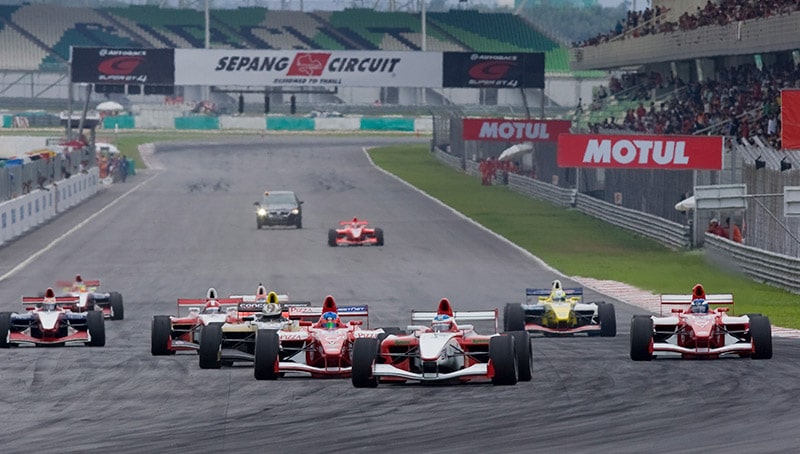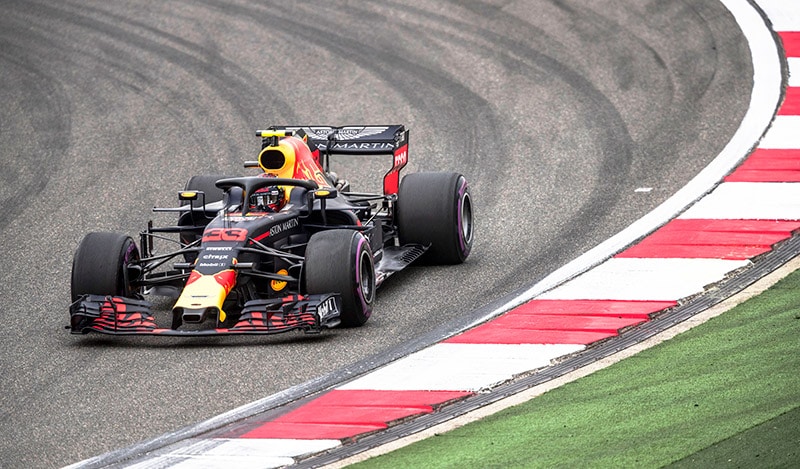Formula 1 races are loved by racing fans all over the world.
Whether you’ve been a spectator of this prestigious motorsport for years, or are just now getting into it, you may be curious just how long those Forumula 1 races are these days.
After all, if you’ve ever watched more than one F1 race, then you likely noticed the length was different.
Here’s the quick facts – F1 Grand Prix races are required to end after 2 hours of racing time, unless there have been suspensions during the race. If there have been suspensions, then the time limit for the F1 race extends to 3 hours. The race can be no less than 305 km, or 189.518 miles, in distance. And the number of laps required for the F1 race is dependent upon how many laps it takes to reach 305 km, or 189.518 miles.
As you can see, there are a lot of factors that come into play when answering the question – how long is an F1 race?
Below, we’ll give you more details on everything there is to know about how long F1 races are, including time limits, distances, and laps.

How Many Miles or Kilometers In Distance Does An F1 Race Cover?
With the exception of the Circuit de Monaco, or Monaco Circuit, all Formula 1 races cover a distance of at least 305 km, which works out to 189.518 miles.
You can view the most recent official regulations here, and they currently state:
The distance of all races, from the start signal referred to in Article 44.10 to the end-ofsession signal referred to in Article 59.1, shall be equal to the least number of complete laps which exceed a distance of 305km.
For the the Circuit de Monaco F1 race, the distance covered is at least 260 km, which works out to 161.557 miles.

You can view the most recent official regulations here, and they currently state:
The distance of the race in Monaco shall be equal to the least number of complete laps which exceed a distance of 260km.
An important thing to note is that the distance covered by an F1 race may actually be less than what the sporting regulations quoted above state in some instances.
The exceptions to the 305 km distance for an F1 race are:
- If two hours elapse before the scheduled race distance is completed, the leader will be shown the end-of-session race signal when he crosses the control line (the Line) at the end of the lap following the lap during which the two (2) hour period ended, provided this does not result in the scheduled number of laps being exceeded.
- Should the race be suspended (see Article 57 in official sporting regulations) the length of the suspension will be added to this period up to a maximum total race time of three (3) hours.
- If the formation lap is started behind the safety car (see Article 49.1 in official sporting regulations) the number of race laps will be reduced by the number of laps carried out by the safety car minus one.
Another interesting thing to keep in mind when looking at the distance covered by a Formula 1 race is that they all have a minimum laps requirement, which means that the true distance covered varies from one race to the next because of the varying number of laps required by each individual race.
Here’s a quick look at how the required number of laps affects total distance for these races:
How Many Laps Are In A F1 Race?

As we mentioned above, the total number of laps in a Formula 1 race vary from one circuit to the next.
This means that here is no standard answer to the question of how many laps are in a Formula 1 race.
The only standard is that the number of laps in the race must hit that magical number of 305 km in distance (with the exception of the Monaco circuit, of course).
The shortest F1 circuit is the Zandvoort circuit in the Netherlands. This circuit has the highest number of laps at 72 laps.
The longest F1 circuit is the Circuit de Spa-Francorchamps in Belgium. This circuit has the lowest number of laps at 44 laps.
Here’s a quick look at how the number of laps vary by circuit in Formula One:
Keep in mind that reaching the required number of laps does not mean that the F1 race ends.
The drivers still have to cover the required minimum distance of 305 km, regardless of how many laps over the requirement it takes them.
How Long Does An F1 Race Take To Finish?

As you may recall from the official sporting regulations for Formula 1 races, no race may exceed two hours in time unless the race is suspended for crashes, bad weather, or other incidents.
In the event that a F1 race is suspended, the maximum amount of time it can take to finish is three hours.
Below are the relevant official regulations on this subject:
- If two hours elapse before the scheduled race distance is completed, the leader will be shown the end-of-session race signal when he crosses the control line (the Line) at the end of the lap following the lap during which the two (2) hour period ended, provided this does not result in the scheduled number of laps being exceeded.
- Should the race be suspended (see Article 57 in official sporting regulations) the length of the suspension will be added to this period up to a maximum total race time of three (3) hours.
- If the formation lap is started behind the safety car (see Article 49.1 in official sporting regulations) the number of race laps will be reduced by the number of laps carried out by the safety car minus one.
How Long Are F1 Race Tracks?

Are you curious about how long are F1 racing circuits?
By now you likely know that the answer to this question varies from one race to the next.
Official Formula 1 regulations do not have any minimum or maximum race track length, which results in the length of a racing circuit varying wildly from one race to the next.
Currently the shortest Formula 1 circuit is the Monaco Grand Prix, which measures in at 3.337 km long (or 2.07 miles).
Currently the longest Formula 1 circuit is the Belgian Grand Prix, which measures in at 7.004 km long (or 4.35 miles).
Here’s a quick look at the distance for each F1 circuit:
What Is The Shortest F1 Race?
As you may have noticed, Formula 1 races are pretty short in general, and that may get you curious about which F1 races are the shortest overall.
Of course, we already know that the shortest distance is the Monaco Grand Prix since it has the lower minimum of 260 km.
Here’s a quick look at the shortest F1 races:
- Shortest F1 championship race by distance: Circuit de Monaco at 260 km
- Shortest F1 championship race by distance above 305 km minimum: Shanghai International Circuit
- Shortest F1 championship race by single lap distance: Circuit de Monaco at 3.337 km for a single lap
- Shortest F1 championship race by finish time: 2021 Belgian Grand Prix with a time of just 3 minutes and 27 seconds
Why Are F1 Races So Short?

If you are an enthusiastic supporter of this motorsport, then you might be wondering why it is so dang short when you watch one of these races on TV.
The truth is that the whole point of a Formula One race is to see how quickly the best race car drivers in the world can complete the circuit.
And since the Formula One cars cannot refuel during the race, they are limited by how much gas the race car can hold.
This means that they can’t really do longer races because of limitations like this.
Not to mention the G-force that the F1 drivers experience while racing really limits how long they can successfully drive the F1 car.
So, the F1 races are short for good reasons, but it keeps things exciting.
Final Word
As you can see, no two F1 races are alike and no two F1 circuits are alike.
That makes it difficult to give definite answers as to things like how long is a Formula One race.
Use the data we’ve collected above to determine how long your favorite F1 race is when you watch it.
